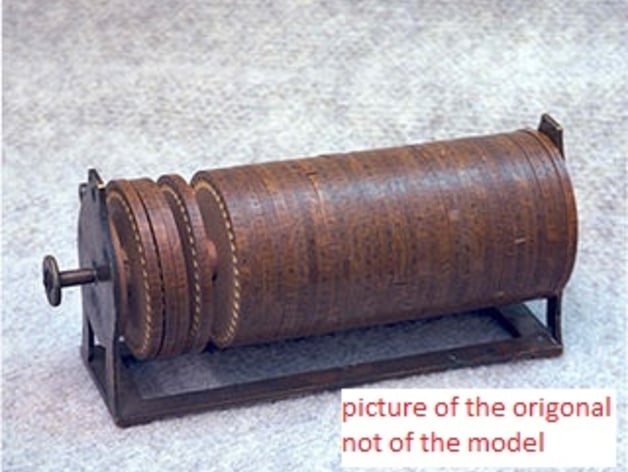
Jefferson disk cipher
thingiverse
To fully grasp the ingenious device, head to Wikipedia at https://en.wikipedia.org/wiki/Jefferson_disk. I will attempt to explain it in detail. President Thomas Jefferson is renowned for writing the Declaration of Independence and being a founding father and politician. However, he was also an inventor and mathematician. I recently visited the National Cryptologic Museum, located next to the NSA headquarters buildings. This relatively small museum showcases the history of ciphers and encryption from the Revolutionary War era to around the Cold War period. One exhibit in the Revolutionary War and Civil War section caught my attention - it was about this device, which inspired me. What impresses me most about this device is its simplicity, yet deciphering it can be extremely challenging, almost impossible. Here's how it works: turn the disks so that they display a message on one line. Then, insert the rod through the holes to prevent the wheels from turning independently. Rotate all the disks to a different line and write down the message displayed there on a piece of paper. When the recipient receives the message, they will need to rotate the disks to reveal the original message. The genius behind this device can be understood by examining other simple ciphers introduced before it. For instance, if you use the simplest cipher where each letter is represented by another letter or symbol, it can easily be cracked by finding words like 'a,' 'all,' or 'I.' Since a word in the decoded message might say 'WMM,' it's likely 'all' - then change all 'w's to 'a's and all 'm's to 'l's, and so on. This is not a reliable code. The Jefferson Disk cipher was used during the Revolutionary War and Civil War era in the United States. This concept is what the famous German Enigma machine was based upon. Jefferson's disk cypher was invented by President Thomas Jefferson. I used SketchUp to design this device.
With this file you will be able to print Jefferson disk cipher with your 3D printer. Click on the button and save the file on your computer to work, edit or customize your design. You can also find more 3D designs for printers on Jefferson disk cipher.
